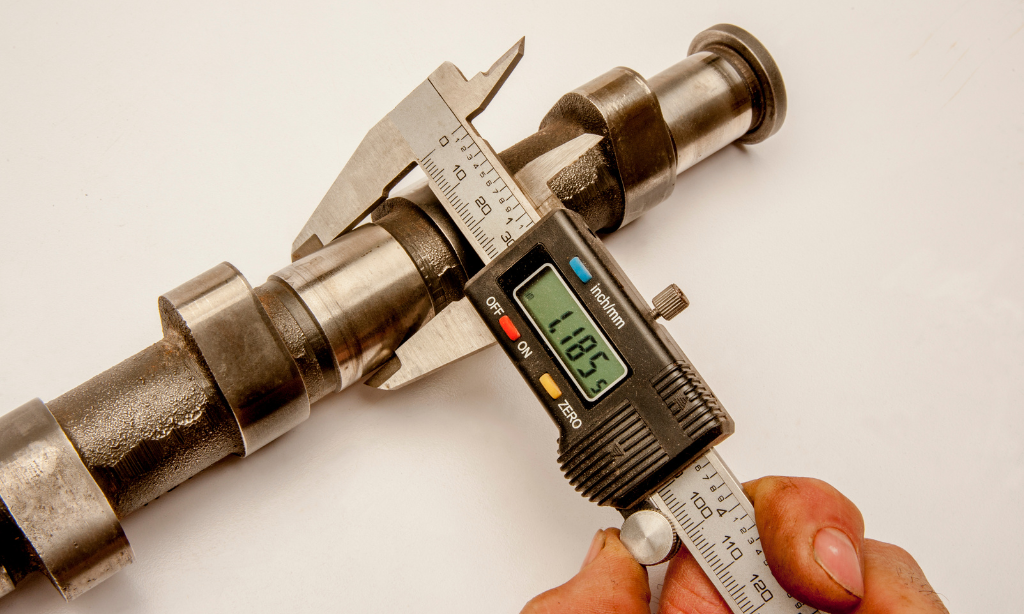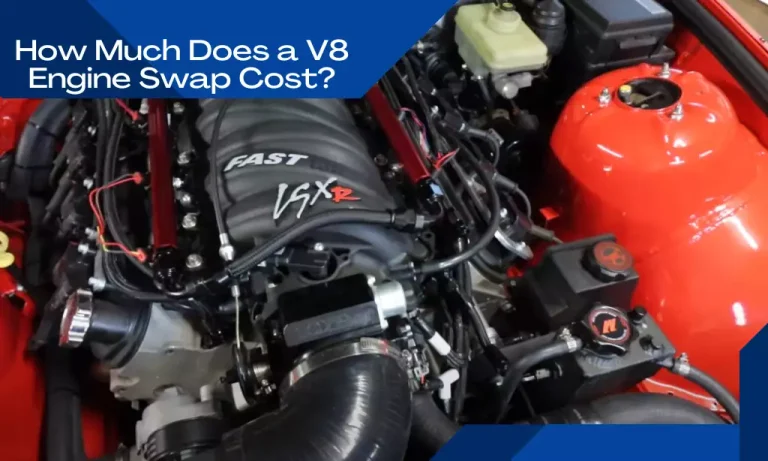How Much Horsepower Does a Camshaft Add? (Secret information)
A camshaft can add varying amounts of horsepower depending on the specific engine and modifications made, but it generally contributes 10-50 horsepower. A camshaft plays a crucial role in managing the intake and exhaust valves’ timing, allowing for improved airflow and combustion efficiency, thus increasing overall horsepower.
Upgrading to a high-performance camshaft can significantly enhance an engine’s power output by finely tuning its valve timing for optimal performance. With the right camshaft selection and proper installation, horsepower gains can be achieved within the range mentioned.
Understanding The Role Of A Camshaft In Engine Performance
The camshaft is a critical component in an engine, playing a vital role in optimizing its performance. By controlling the opening and closing of the engine’s valves, the camshaft determines the amount of air-fuel mixture that enters the combustion chamber.
This directly affects horsepower, torque, and overall engine efficiency.
Importance Of Camshaft In Optimizing Engine Performance
The camshaft’s role goes beyond simply opening and closing valves. Here are the key points to understand its importance in maximizing engine performance:
- Valve timing: The camshaft’s profile dictates the precise timing of valve opening and closing. This ensures that the valves are synchronously operating with the engine’s pistons, optimizing the combustion process.
- Valve lift: The camshaft’s design determines the lift height of the valves, controlling the amount of airflow into the chamber. Higher lift heights result in increased power and torque output.
- Duration: The duration of valve openings, set by the camshaft, impacts the engine’s ability to expel exhaust gases effectively. Adequate duration allows efficient scavenging, leading to improved performance.
- Performance customization: Camshafts can be customized to suit specific engine requirements. Different profiles offer variations in power delivery, throttle response, and operating range, enabling engine tuning for different purposes, such as racing or fuel efficiency.
- Compatibility with other components: Harmonizing the camshaft’s characteristics with other engine components is crucial. Proper selection of camshafts ensures compatibility with the cylinder head, valve train, and intake and exhaust systems to maximize overall performance.
Exploring The Functionality Of A Camshaft
Understanding how a camshaft functions sheds light on its contribution to engine performance. Here are the key points to consider:
- Camshaft design: The shape and contours of a camshaft are carefully engineered to precisely control valve movement. Different camshaft profiles, such as flat tappet, roller, or variable valve timing, offer specific benefits and are selected based on the intended use and engine characteristics.
- Valve actuation: The camshaft’s lobes come into contact with valve lifters, pushrods, or direct-acting mechanisms to operate the valves. The lobe shape determines the mechanical advantage and speed at which the valves open and close.
- Valve overlap: Camshaft design also influences valve overlap, which is the period when both intake and exhaust valves are slightly open simultaneously. Properly timed overlap can enhance engine performance by facilitating better cylinder filling and exhaust scavenging.
- Role in engine speed: The camshaft’s rotational speed directly correlates with the engine’s rpm (revolutions per minute). Adjusting the camshaft’s characteristics can optimize power delivery at different rpm ranges.
- Material and durability: Camshafts are typically made from hardened steel or alloy materials. Their strength and durability are crucial due to the high-stress nature of operation, ensuring long-term reliability and performance.
Key Factors Influencing Camshaft Performance
Several factors impact how a camshaft performs in an engine:
- Engine specifications: The engine’s displacement, cylinder head design, compression ratio, and induction system influence the selection of an appropriate camshaft, considering factors like desired power band, maximum rpm, and engine aspiration.
- Intended use and application: Camshaft selection depends on whether the engine is intended for street use, racing, towing, or daily commuting. Each application requires different power characteristics, torque output, and responsiveness.
- Valve train geometry: Proper alignment of valve train components, such as rocker arms, pushrods, and valve springs, is crucial to ensure smooth operation and prevent premature wear.
- Ecu tuning: To fully exploit a new camshaft’s performance potential, electronic control unit (ecu) tuning may be necessary. This ensures the engine management system adequately adjusts fuel delivery, ignition timing, and other parameters to match the modified camshaft.
- Balancing trade-offs: Camshaft design involves balancing various characteristics such as lift, duration, and lobe separation angle. Achieving the desired power output without compromising idle quality, emissions, or fuel efficiency may require trade-offs in camshaft specifications.
Understanding the role of a camshaft in engine performance is crucial for enthusiasts looking to optimize their engine’s power and torque output. By considering factors such as camshaft design, valve timing, customization options, and compatibility with other components, one can make informed decisions to achieve the desired performance goals.
How A Camshaft Enhances Horsepower Output
Unleashing The Power: Camshaft’S Impact On Engine Horsepower
A crucial component of an engine’s performance, the camshaft plays a significant role in determining the horsepower output. By controlling the intake and exhaust valves’ opening and closing timing, a camshaft can enhance an engine’s power potential. In this section, we will delve into how a camshaft enhances horsepower output and explore the relationship between camshaft design and performance.
We will also discuss how to choose the right camshaft for your engine to maximize its overall performance.
Analyzing The Relationship Between Camshaft Design And Horsepower
The design of the camshaft directly affects an engine’s horsepower output. Here are the key points to consider:
- Duration: The duration of the camshaft refers to how long the valves are open during each combustion cycle. Longer duration allows more time for fuel and air to enter the combustion chamber, resulting in increased horsepower.
- Lift: The lift of the camshaft determines how far the valves open during each cycle. A greater lift allows more fuel and air to flow into the combustion chamber, resulting in improved horsepower.
- Profile: The camshaft’s profile, also known as the camshaft’s shape, affects the valve timing and lift. Different profiles are suited for different applications, with aggressive profiles delivering enhanced horsepower at higher rpms.
- Overlap: Overlap refers to the brief period when both the intake and exhaust valves are open simultaneously. Optimal overlap can improve horsepower by boosting airflow and scavenging the combustion chamber.
Maximizing Performance: Choosing The Right Camshaft For Your Engine
Selecting the right camshaft for your engine is crucial to maximizing performance. Consider the following factors:
- Intended use: Determine the primary use of your engine, such as street driving, drag racing, or road course racing. The camshaft should be tailored to the specific demands of your application.
- Rpm range: Different camshafts perform optimally within specific rpm ranges. Consider the desired rpm range for your engine and choose a camshaft that matches it.
- Valve springs and lifters: Ensure that your engine’s valve springs and lifters are strong enough to handle the increased demands that a high-performance camshaft may place on them.
- Professional advice: Seek guidance from experienced professionals or engine builders who can help you select a camshaft that suits your engine’s specifications and performance goals.
By choosing a camshaft that aligns with your engine’s characteristics and intended use, you can unleash its full horsepower potential.
Remember, the camshaft plays a pivotal role in determining an engine’s horsepower output. Understanding the relationship between camshaft design and performance is key to maximizing your engine’s power potential. Whether it’s increasing duration, lift, or finding the right profile, selecting the right camshaft for your engine is crucial to achieving optimal performance.
So take the time to analyze your engine’s needs and consult with experts to ensure you choose the camshaft that unlocks the true horsepower potential of your engine. Happy driving!
Camshaft Upgrades: Unleashing The True Potential
Your vehicle’s camshaft plays a crucial role in determining its overall performance. Upgrading your stock camshaft to an aftermarket option can be a game-changer, significantly boosting your horsepower and torque. Let’s dive into the world of camshaft upgrades and explore the performance gains, choosing the right camshaft upgrade for your goals, and installation and tuning tips.
Performance Gains: Upgrading Stock Camshaft Vs. Aftermarket Options
- Upgrading your stock camshaft can unlock a range of performance gains that were previously untapped. Here’s what you can expect when you opt for an aftermarket camshaft:
- Increased horsepower: An upgraded camshaft can add significant horsepower to your engine, allowing for quicker acceleration and more power on demand.
- Improved torque: Alongside increased horsepower, a new camshaft can also provide a boost in torque. This means better low-end power and enhanced towing capabilities.
- Enhanced throttle response: With a better camshaft, the responsiveness of your throttle will improve, giving you a more satisfying driving experience.
- Extended powerband: An aftermarket camshaft can widen the powerband of your engine, providing power gains across a broader range of rpms. This translates to more usable power in various driving conditions.
- While stock camshafts are designed to meet the needs of a wide range of engines, they often leave room for improvement when it comes to maximizing performance. Upgrading to an aftermarket option can unleash the true potential of your engine.
Choosing The Right Camshaft Upgrade For Your Performance Goals
- When it comes to choosing the right camshaft upgrade for your performance goals, several factors come into play. Consider the following:
- Intended use: Are you primarily looking for better street performance, racing capabilities, or off-road power? Identifying your specific usage will guide you in selecting the right camshaft.
- Engine specs: Take into account your engine’s displacement, compression ratio, and other specifications to ensure compatibility with the camshaft you choose. Different camshafts are optimized for specific engine setups.
- Performance profile: Camshafts come in various profiles, such as mild, aggressive, or somewhere in between. Assess your desired powerband, idle characteristics, and overall performance preferences to find the ideal profile for your needs.
- Consulting with experts, such as engine builders or performance shops, can provide valuable insights and recommendations tailored to your specific vehicle and goals. Their expertise can help you make an informed decision and avoid potential compatibility issues.
Installation And Tuning Tips For Camshaft Upgrades
- Installing and tuning a new camshaft requires attention to detail and precision. Follow these tips for a successful upgrade:
- Professional installation: Unless you have the necessary experience and tools, it’s best to entrust the installation to a professional. They possess the expertise to handle the intricacies of camshaft installation, ensuring everything is done right.
- Valve train upgrades: In many cases, upgrading the camshaft also requires upgrading other components of the valve train, such as valves, springs, and lifters. It’s essential to evaluate the compatibility and condition of these parts to achieve optimal performance.
- Engine tuning: After the camshaft upgrade, your engine’s tuning needs to be adjusted to accommodate the changes. A professional tune will optimize fueling, ignition timing, and other parameters to fully capitalize on the upgraded camshaft’s potential.
- Regular maintenance: It’s crucial to follow the manufacturer’s recommendations for maintenance intervals. Regularly inspect and adjust valve clearances while monitoring the overall health of your camshaft and related components.
- Keep in mind that camshaft upgrades can have a significant impact on your vehicle’s performance, but they need to be integrated and optimized properly to achieve the desired results. By following these installation and tuning tips, you can ensure a smooth transition to your new camshaft.
Upgrade your vehicle’s camshaft, unleash its true potential, and experience a whole new level of performance. Whether you’re on the streets or pushing the limits on the track, a camshaft upgrade can make all the difference. Choose wisely, install meticulously, and enjoy the exhilarating ride!
Conclusion
The camshaft is a vital component of an engine that plays a significant role in determining its horsepower. By controlling the opening and closing of the engine’s valves, the camshaft affects the engine’s overall performance. Different camshaft designs are available, each with its own characteristics and power gains.
Choosing the right camshaft for your engine can result in notable horsepower improvements, with some aftermarket options potentially offering substantial increases. However, it is essential to consider other factors such as the engine’s compression ratio, fuel delivery system, and exhaust system when installing a new camshaft for optimal performance.
It is also crucial to consult with a knowledgeable professional and conduct thorough research to ensure compatibility and avoid any potential drawbacks. Ultimately, a well-matched camshaft can significantly boost horsepower, enhancing your engine’s performance and delivering a more exhilarating driving experience.
- Why Are My Car Headlights Not Bright Enough? - May 9, 2024
- How Long Can You Drive With An EVAP Leak? - May 9, 2024
- What Does B Stand for in a Car? [Full Guide] - May 9, 2024


![How Long Do Honda Civics Last? [Unlock the Secrets]](https://automhelp.com/wp-content/uploads/2023/07/Honda-Civics-768x461.png)




